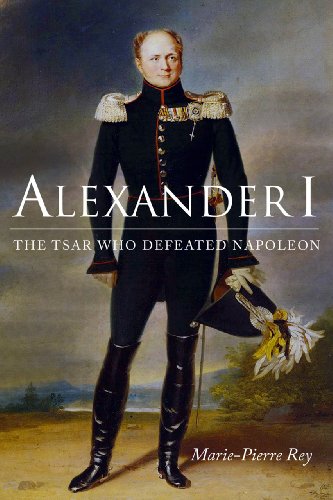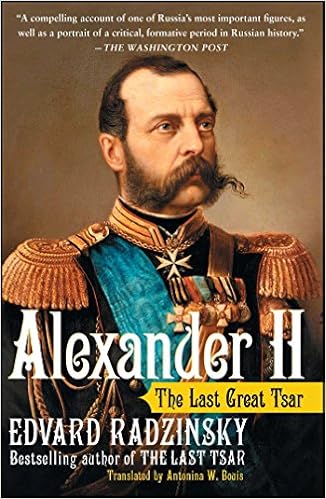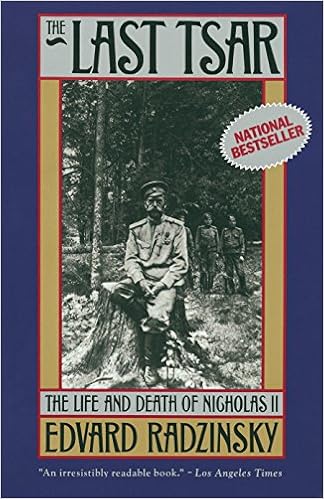I resolve (hope) to write more regularly in 2020 than I did in 2019.
Although writing has been nonexistent the past six months, I have continued to read and research in areas related, even if loosely, to our broader family history. Since September, for example, I have been reading biographies of the Russian tsars of the nineteenth and early twentieth centuries.
Although writing has been nonexistent the past six months, I have continued to read and research in areas related, even if loosely, to our broader family history. Since September, for example, I have been reading biographies of the Russian tsars of the nineteenth and early twentieth centuries.
I began with Alexander I, the tsar who ruled Russia when our ancestors first moved to Molotschna colony. Marie-Pierre Rey’s Alexander I: The Tsar Who Defeated Napoleon is both an engaging read and a reliable source of insight into this peculiar man. Rey’s account of Alexander I’s spiritual side may even shed light on the Przechovka party’s encounter with him outside of Warsaw (see here). From its account of Alexander’s childhood under the care of his grandmother Catherine the Great through the events surrounding the killing of his father Paul to the shock of his abrupt death, not to mention the possibility that he faked his death in order to abdicate, Alexander I: The Tsar Who Defeated Napoleon clearly deserves the high praise that it has received since its publication in 2012.
Skipping over Alexander I’s brother and successor, Nicholas I, I then read a biography of Alexander II, who was tsar when our family ancestors left Russia for the United States. Edward Radzinsky has written extensively on Russian history and many of its key figures; his Alexander II: The Last Great Tsar puts his literary talents and deep knowledge of Russia on full display. Alexander II is commonly referred to as Russia’s Abraham Lincoln, since he was the tsar who finally freed Russia’s serfs from centuries of bondage and servitude: Lincoln issued the Emancipation Proclamation in 1863; Alexander beat him by two years, issuing his Emancipation Manifesto in 1861. The similarities do not end there: like Lincoln, Alexander II fell victim to an assassin. In fact, assassins attempted to end Alexander’s life and reign on multiple occasions; they finally succeeded in 1881, two years after our family had emigrated to the United States.
Skipping once again over the next tsar, Alexander II’s son, Alexander III, we come to Nicholas II, eldest son of Alexander III and Russia’s last tsar. Edward Radzinsky also authored a biography of Nicholas II: The Last Tsar: The Life and Death of Nicholas II. I have not yet finished this work, but I do know how the story ends: after the 1917 Russian Revolution, Nicholas and his family were placed under house arrest, then executed in a basement in the middle of the night and hastily buried in a forest, all so that no Romanov heir would ever again rule over Russia. Interestingly, their graves were discovered in the late 1970s and finally exhumed in 1991, after the fall of the Soviet Union.
Several other tsar biographies await, but reading is not the only way to learn about the Romanov dynasty. Posted on Youtube is a series of eight hour-long documentaries about the Romanov rulers (see here). The documentary was produced in Russian by Star Media, but the episodes have all been dubbed in English and are easy to follow. The Romanov dynasty began with Mikhail, ascended to great heights under Peter the Great, reached another high point with Catherine II, the Great, the ebbed and flowed through the last century and a quarter with her successors: Paul I, Alexander I, Nicholas I, Alexander II, Alexander III, and, finally, Nicholas II. I know of no better source for gaining a significant understanding of the Romanovs and their times than this Star Media production, which is expertly produced in every detail.
I find the history of nineteenth- and twentieth-century Russia interesting all on its own, but adding to this the recognition that our ancestors lived through many of the events recounted makes the search and discovery all the more satisfying. In the spirit of the new year, then, I do resolve to (try to) record more of my discoveries in writing so that others can share in the enrichment and the fun.
Skipping over Alexander I’s brother and successor, Nicholas I, I then read a biography of Alexander II, who was tsar when our family ancestors left Russia for the United States. Edward Radzinsky has written extensively on Russian history and many of its key figures; his Alexander II: The Last Great Tsar puts his literary talents and deep knowledge of Russia on full display. Alexander II is commonly referred to as Russia’s Abraham Lincoln, since he was the tsar who finally freed Russia’s serfs from centuries of bondage and servitude: Lincoln issued the Emancipation Proclamation in 1863; Alexander beat him by two years, issuing his Emancipation Manifesto in 1861. The similarities do not end there: like Lincoln, Alexander II fell victim to an assassin. In fact, assassins attempted to end Alexander’s life and reign on multiple occasions; they finally succeeded in 1881, two years after our family had emigrated to the United States.
Skipping once again over the next tsar, Alexander II’s son, Alexander III, we come to Nicholas II, eldest son of Alexander III and Russia’s last tsar. Edward Radzinsky also authored a biography of Nicholas II: The Last Tsar: The Life and Death of Nicholas II. I have not yet finished this work, but I do know how the story ends: after the 1917 Russian Revolution, Nicholas and his family were placed under house arrest, then executed in a basement in the middle of the night and hastily buried in a forest, all so that no Romanov heir would ever again rule over Russia. Interestingly, their graves were discovered in the late 1970s and finally exhumed in 1991, after the fall of the Soviet Union.
Several other tsar biographies await, but reading is not the only way to learn about the Romanov dynasty. Posted on Youtube is a series of eight hour-long documentaries about the Romanov rulers (see here). The documentary was produced in Russian by Star Media, but the episodes have all been dubbed in English and are easy to follow. The Romanov dynasty began with Mikhail, ascended to great heights under Peter the Great, reached another high point with Catherine II, the Great, the ebbed and flowed through the last century and a quarter with her successors: Paul I, Alexander I, Nicholas I, Alexander II, Alexander III, and, finally, Nicholas II. I know of no better source for gaining a significant understanding of the Romanovs and their times than this Star Media production, which is expertly produced in every detail.
I find the history of nineteenth- and twentieth-century Russia interesting all on its own, but adding to this the recognition that our ancestors lived through many of the events recounted makes the search and discovery all the more satisfying. In the spirit of the new year, then, I do resolve to (try to) record more of my discoveries in writing so that others can share in the enrichment and the fun.



No comments:
Post a Comment